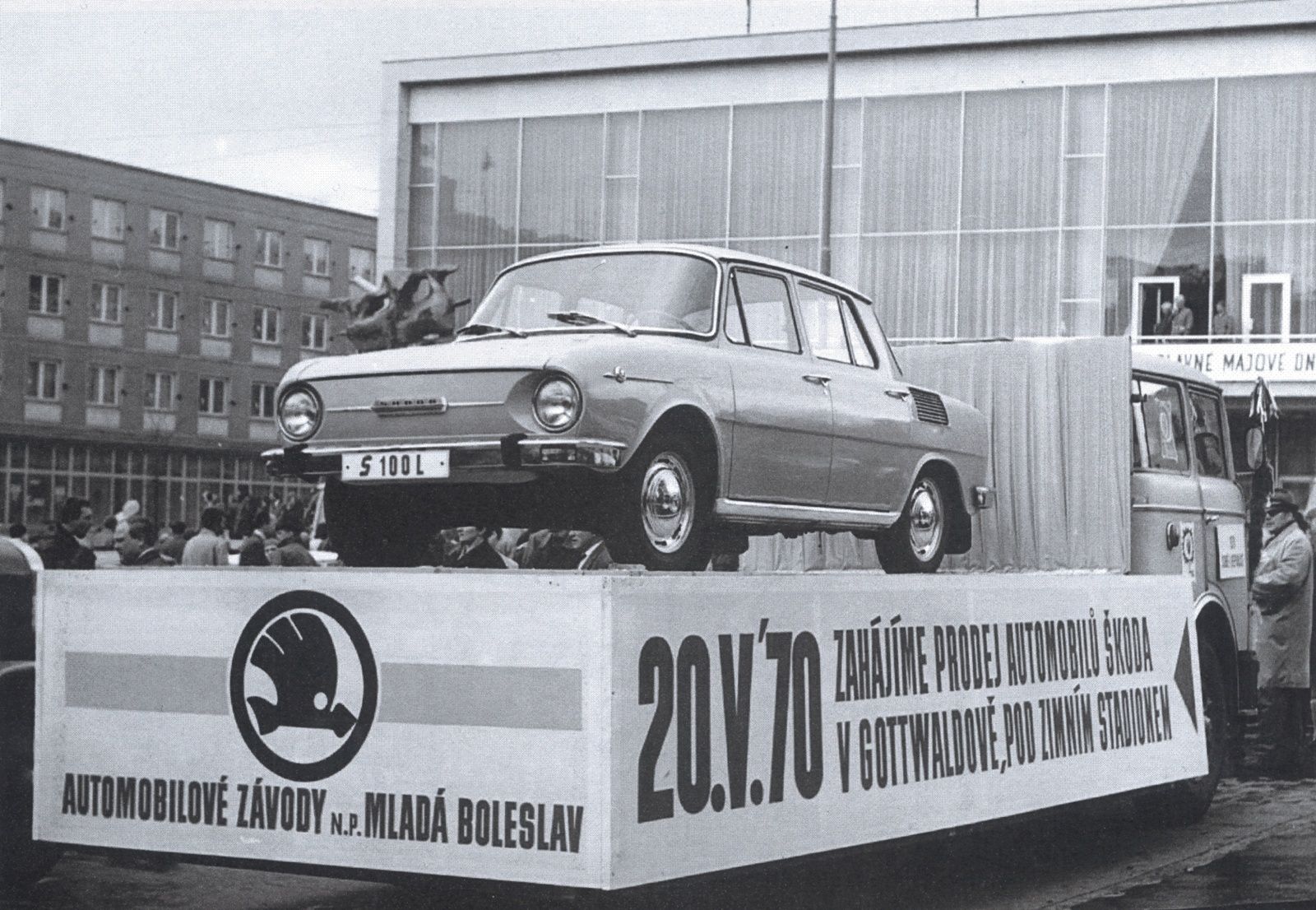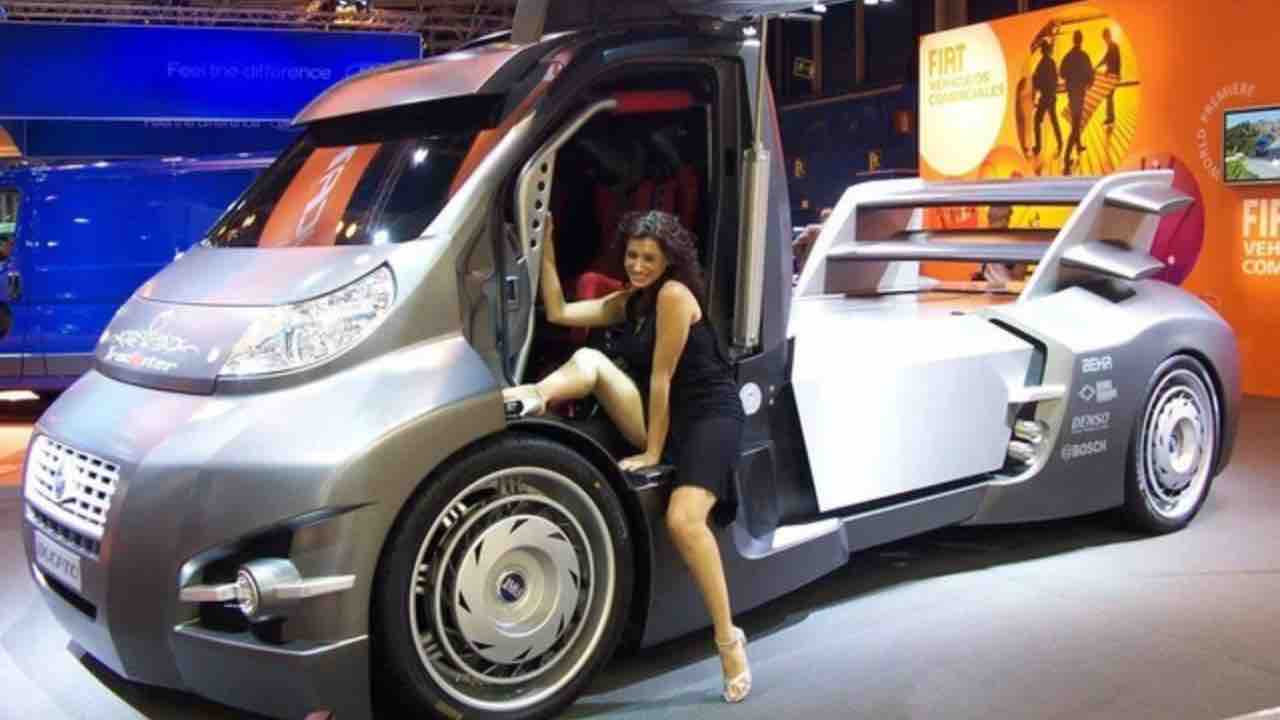Limited offer, long waiting times and not exactly low prices. Buying a car under socialism was not easy and most people could dream of choosing a color, equipment or engine. And even though the waiting times for today’s cars are often disproportionately long, under the previous regime, even a few years was not an ordinary Škoda, unless one had contacts or paid something extra on the side, nothing special.
The market for new cars in Czechoslovakia was only slowly moving after the end of the Second World War. The factories were often damaged, it was difficult to continue the pre-war production, and the political map slowly began to be rewritten again, and the Communists came to the head of the state. In addition, the reorganization of industry and the nationalization of large enterprises came. Whoever wanted to buy a new car had to have not only a considerable amount of money, but also a special voucher that entitled him to buy the vehicle.
In Mladá Boleslav, where the carmaker was renamed AZNP, the first new post-war car began production on May 7, 1946. It was a Škoda 1101 called the Tudor, which together with the car Aero Minor played the role of a folk car. Minor was created during the Second World War under the baton of Jawa, but the aforementioned reorganization of industry assigned its production to the Aircraft: the engine and landing gear worked in the former Walter factory, the body and assembly of the car in the Rudy Letov factory.
The sale of cars and motorcycles was first procured from 1946 by the so-called Central Motor Vehicle Shop 20, at the beginning of 1949, ie after the communist coup of February 1948, then Mototechna was established. In addition to the mentioned Tudor and Minor models, its offer included, for example, the Tatra 57B or the famous Tatraplan, which was intended only for authorities and institutions. After all, the production of Tatra passenger cars briefly ended in 1951, when it was decided that they would focus only on trucks in Kopřivnice. This was changed in secret by the Tatra 603 for the highest representatives of the communist regime.
The offer of machines in Mototechna was initially exclusively Czechoslovak production. “The first imported car that Mototechna sold was the IFA F9,” said car journalist and journalist Jan Tuček at one of his lectures held at the Škoda Museum. It was written in 1954, after which more foreign cars began to enter the Czechoslovak market. The first in the Soviet Union was the Pobeda, the GAZ M20, which was the first post-war car from the Gorky plant. In 1960, it was replaced by its licensed version from Poland with the designation Warsaw 201.
From the Czechoslovak offer, the Škoda 1102 was first replaced by the first Mladá Boleslav car with an all-metal body, a model Škoda 1200/1201and in 1955 a breakthrough followed Škoda 440 alias Spartak. As Jan Tuček points out, the car cost 27,450 crowns and the entire amount consisted of a deposit in the state savings bank. In addition, a special permit was still needed. In 1956, the deposit amount decreased to 20,000, but with an average salary of around 1,200 crowns, it was still a large amount.
In 1955, the first car of Western European production also appeared in Mototechna, which became the famous turtle aka Renault 4CV. The car with the rear engine and rear-wheel drive has been manufactured in France since 1947, and in Czechoslovakia over five thousand were finally sold by 1961. There would probably be more, but demand exceeded supply. The car cost 22 thousand crowns.
After all, this applied to the entire new car market. Other Western European cars in Czechoslovakia include the Simca Aronde and the Fiat 600 (Italian cars eventually sold over 16,000 units), which appeared in 1957, a year later came the Ford Anglia and in 1959 the popular Hillman Minx.
At the end of the 1950s, Mototechna imported the first Moskvič cars. It was about model 407, the first of the Moscow carmaker’s own designs and not just a copy of the pre-war Opel. At the same time, the first empresses came from the Soviet Union, that is Volhy 21, recalls Jan Tuček. Although there were special queues for them together with the Tatra 603 and most of them ended up in the hands of party members or other deserving communist cadres, a few of them also got among private individuals.
In any case, the queues for the new cars were quite long and the car was still waiting for several years, even though the applicant had the required amount at his disposal. In 1959 and 1960, there was a so-called free market in Mototechna, where the car could be obtained much faster, but also at a much higher price. At the same time, new cars have appeared in Tuzex since 1960, ie a company that sells mainly foreign goods for currencies or special Tuzex crowns or bony.
The free market returned to the scene in 1969. “In order for the government to raise as much money as possible, a free market was again created for imported cars and socialist cars produced under license,” Tuček describes. For example, the Fiat 600D cost 69 thousand crowns there and the Saab 95 Kombi even 165 thousand crowns. Other cars, including those from Mladá Boleslav, gradually began to enter the free market, and such a Škoda 110 L came to 89,000, which was almost double the amount for which the car was sold in Mototechna, but on the waiting list. In the early 70’s, prices began to fall slightly and the aforementioned 110 L came to 69 thousand.
By the way, with a hundred car sales history in Czechoslovakia, it has slightly surpassed the first truly mass-produced Škoda. The 1000 MB model with the “everything in the back” concept arrived in 1964, and although it initially suffered from various birth pains, cars soon began to leave the new factory in Mladá Boleslav on a large scale: at the end of 1965 it was up to 150 cars a day, although many of they were exported for valued currencies. It was the “embéčko” that was followed by the Škoda 100/110 and even later the model row number 742which were no less famous 105, 120 or 125. The last Škoda with rear-wheel drive did not occur until 1990.
Another fundamental change in car sales in Czechoslovakia is linked to the Škoda models, because in 1969 AZNP began to establish so-called brand stores, similar to today’s showrooms. Until then, the cars were sold through Mototechna or Tuzex, and it didn’t matter what brand she wore on the hood. The brand store, which Alois Samohýl opened in Gottwaldov, today’s Zlín, in May 1970 deserves a special mention. After Mladá Boleslav, it was the second AZNP brand store in Czechoslovakia.
The main motto of the Gottwald store was a pro-customer approach (Mototechna also responded to this in the 1970s by improving services and, for example, building sales services: Jarov even had one of the largest and most modern services in Europe), so people drove there for cars from the opposite end. of the Republic. Between 1970 and 1989, Alois Samohýl finally sold 175,000 Škoda cars, then bought a dealership in the 1990s.
The 1970s in Mototechna were marked by perhaps the most well-known socialist models on Czechoslovak roads. It sold well Trabant 601, which was also one of the cheapest cars on the market at the time. In addition to the two-door sedan, a station wagon was also supplied, and there was also a Hycomat version with a semi-automatic clutch.
It also began to be exported outside the Soviet Union in the early 1970s žigulík, ie the licensed Fiat 124 under the banner of a new carmaker with the trade name Lada. The 2101 sedan was complemented by the 2102 station wagon and the more luxurious 2103 sedan (the models were also known as the VAZ or Lada 1200 and 1500 for a better-equipped sedan). It first appeared in 1973 Dacia 1300Romanian licensed Renault 12.
In 1974, for example, the VAZ 2101 cost 58,000 crowns, while the Škoda 100 in the Standard version cost 45,100 crowns. The menu also included Moskvich 408 for 46 thousand crowns or Polish Fiat 125p for 67,100 crowns with a weaker and 72,100 crowns with a stronger engine. The main selling bestsellers, however, were the “hundred” and the slug, according to Tuček, in the first half of the 1970s, the chances increased that the person interested in the car actually reached it. For a while, there was even a situation where there were plenty of cars on the Czechoslovak market, and in the autumn of 1973, the queues disappeared for a limited time.
Between 1971 and 1975, 666,000 passenger cars were finally sold in Czechoslovakia; more than half, according to Jan Tuček, had a place of production abroad, logically most often in one of the countries of the Eastern bloc. This is how the žigulík dominated. The first Lady Niva appeared on the market in 1980, but imports of Russian cars suffered from a decline in the convertible ruble and deliveries to Czechoslovakia gradually decreased: in 1978, over 33,000 pieces of all Lada models were imported, a year later it was still almost 25 thousand and in 1980 over 22.5 thousand. But in 1981 there were just over seven thousand, and in 1982 even just over four thousand. The import of more than ten thousand Russian models with a sailboat reached only two times by 1990. There was interest in these cars.
The situation in general in the field of new passenger cars in Czechoslovakia began to stagnate in the 1980s, also due to the fact that cars from the Eastern bloc countries began to become technically and morally obsolete (and the situation of fairly modern Lada cars has already been discussed). Whether it was the Trabant 601, whose imports ended in 1984, the Dacia 1310 or even Škoda models. Moskvich stopped importing altogether in 1980.
Thanks to the low price, it became quite popular in the 80’s, a small Polski Fiat 126p with a rear engine and rear-wheel drive. In 1988, a South Korean car appeared for the first time in Mototechna, namely the Daewoo Racer, which was a licensed version of the Opel Kadett E. It cost just under 190,000 crowns at the time.
In conclusion, it is worth mentioning Tuzex, which offered not only foreign cars, but also Skoda models. He even managed to mount accessories otherwise designed for Western European markets. It was through this company that the first diesel passenger cars came to Czechoslovakia in 1987: the Peugeot 309 GLD and the Fiat Uno Diesel.
The burials of socialist brands came to Czechoslovakia and later to the independent Czech Republic even after 1989. Lada models remained popular in the first half of the 1990s. ZAZ Tavria, at the time the cheapest new car on the market with a price of just over one hundred thousand crowns. About popularity Damage Favorit then you probably don’t even need to talk.
–


